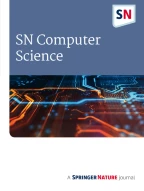Abstract
Last two decades have witnessed the exponential growth of IoT. This emerging trend has been producing the novel technologies and protocol stacks that permit different devices to connect with Internet or any global network. IoT becomes the solution in providing the protocols based on desired applications to the worldwide. A promising option as light-weight ciphers is available by the developers. However, light-weight encryption tool supports only application-based IoT devices. This work suggests a unique encryption/decryption algorithms named as “Quondam signature algorithm (QSA)” to protect the data. Quondam signature algorithm targets problem of man-in-the-middle attack. Currently, it becomes difficult to get certain agreed statistics from attackers as they could easily find out the encryption key. Therefore, a set of rules for random keys for statistical encryption and decryption is recommended here. In this set of rules, to provide ciphers, the spiral wheel principle is used to rearrange sequences of people. It adjusts the character range in a selected line. It is based on the idea of the center of gravity of the series collecting the median of the sample, based essentially on odd and even numbers. This technique is available in symmetric key algorithms. To save from attacks, it produces a rather reliable and secure verbal exchange interface for the IOT. This algorithm offers its suitability to demonstrate through a hardware platform with high interoperability and low overhead.
Similar content being viewed by others
References
Safi A. Improving the security of internet of things using encryption algorithms. Int J Comput Inf Eng. 2017;11(5):558–61.
Farash MS, Turkanović M, Kumari S, Holbl M. An efficient user authentication and key agreement scheme for heterogeneous wireless sensor network tailored for the internet of things environment. Ad Hoc Netw. 2016;36(1):152–76.
Iqbal MA, Olaleye OG, Bayoum MA. A review on internet of things (IoT): security and privacy requirements and the solution approaches. Glob J Comput Sci Technol E Netw Web Secur. 2016;16(7):1–10.
Sharma H, Saini A, Kumar A, Bhardwaj M. An improved machine learning model for IoT-based crop management system. In: CIS advances in intelligent systems and computing. 2020. p. 1334. https://doi.org/10.1007/978-981-33-6981-8_45.
Zhao M, Yao X, Liu H, Ning H. Physical unclonable function based authentication protocol for unit iot and ubiquitous IoT. In: International conference on identification, information and knowledge in the internet of things (IIKI), IEEE. 2016. p. 179–184.
Hussain R, Abdullah I. Review of different encryptionand decryption techniques used for security and privacy of iot in different applications. In: International conference on smart energy grid engineering (SEGE) IEEE. IEEE; 2018. p. 293–297.
Zhou Q, Elbadry M, Ye F, Yang Y. Flexible fine grained access control for internet of things. In: Poster abstract, Proc. 2nd Int. Conf. Internet-of-Things Design Implement. (IoTDI). 2017. p. 333–334. https://doi.org/10.1145/3054977.3057308.
Roman R, Zhou J, Lopez J. On the features and challenges of security and privacy in distributed internet of thing. Comput Netw. 2013;57(10):2266–79.
Singh R, O’Farrell T, David JPR. An enhanced color shift keying modulation scheme for high-speed wireless visible light communications. J Lightwave Technol. 2014;32(14):2582–92. https://doi.org/10.1109/JLT.2014.2328866.
Kumar KJJ, Chenna K, Reddy K, Salivahanan S. Novel and efficient cellular automata based symmetric key encryption algorithm for wireless sensor networks. Int J Comput Appl. 2011;13(4):30–7. https://doi.org/10.5120/1767-2424.
Anghelescu P, Sofron E, Rincu CI, Iana VG. Programmable cellular automata based encryption algorithm. In: Proceedings of the 31st international semiconductor conference, Sinaia. 2008. p. 13–15.
Das ML. Two-factor user authentication in wireless sensor networks. Trans Wirel Commun IEEE. 2009;8(3):1086–90. https://doi.org/10.1109/TWC.2008.080128.
Ahmed U, Shah AK, Usman M, Ahmed I, Aslam MI, Khan S, Shah UA. SIT: a lightweight encryption algorithm for secure internet of things. 2017. https://doi.org/10.14569/IJACSA.2017.080151.
Hoon LC. CRYPTON: a new 128-bit block cipher. AES submission. 1998.
Xue K, Ma C, Hong P, Ding R. A temporal-credential-based mutual authentication and key agreement scheme for wireless sensor networks. J Netw Comput Appl. 2013;36(1):316–23.
Wu T-Y, Guo X, Chen Y-C, Kumari S, Chen C-M. SGXAP: SGX-based authentication protocol in IoV-enabled fog computing. Symmetry. 2022;14:1393. https://doi.org/10.3390/sym14071393.
Kumar, S., Bhardwaj, M., & Agarwal, P. (2023b). Performance optimization of request and response time of client server communication using IOT based node to node server with Nodemcu. In: Recent advances in sciences, enginerring, information technology & Management. 2023;2782(1). https://doi.org/10.1063/5.0154785.
Author information
Authors and Affiliations
Corresponding author
Ethics declarations
Conflict of interest
No conflict of interest.
Additional information
Publisher's Note
Springer Nature remains neutral with regard to jurisdictional claims in published maps and institutional affiliations.
This article is part of the topical collection “Industrial IoT and Cyber-Physical Systems” guest edited by Arun K Somani, Seeram Ramakrishnan, Anil Chaudhary and Mehul Mahrish.
Rights and permissions
Springer Nature or its licensor (e.g. a society or other partner) holds exclusive rights to this article under a publishing agreement with the author(s) or other rightsholder(s); author self-archiving of the accepted manuscript version of this article is solely governed by the terms of such publishing agreement and applicable law.
About this article
Cite this article
Bhardwaj, M., Kumari, U., Kumar, S. et al. An Efficient User Authentication and Key Agreement Scheme Wireless Sensor Network and IOT Using Various Security Approaches. SN COMPUT. SCI. 4, 574 (2023). https://doi.org/10.1007/s42979-023-01964-1
Received:
Accepted:
Published:
DOI: https://doi.org/10.1007/s42979-023-01964-1
